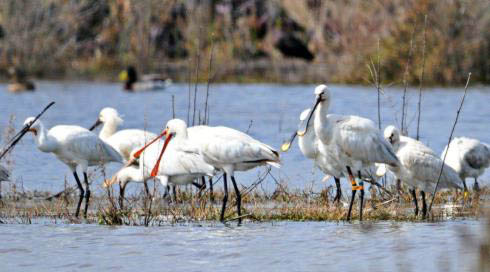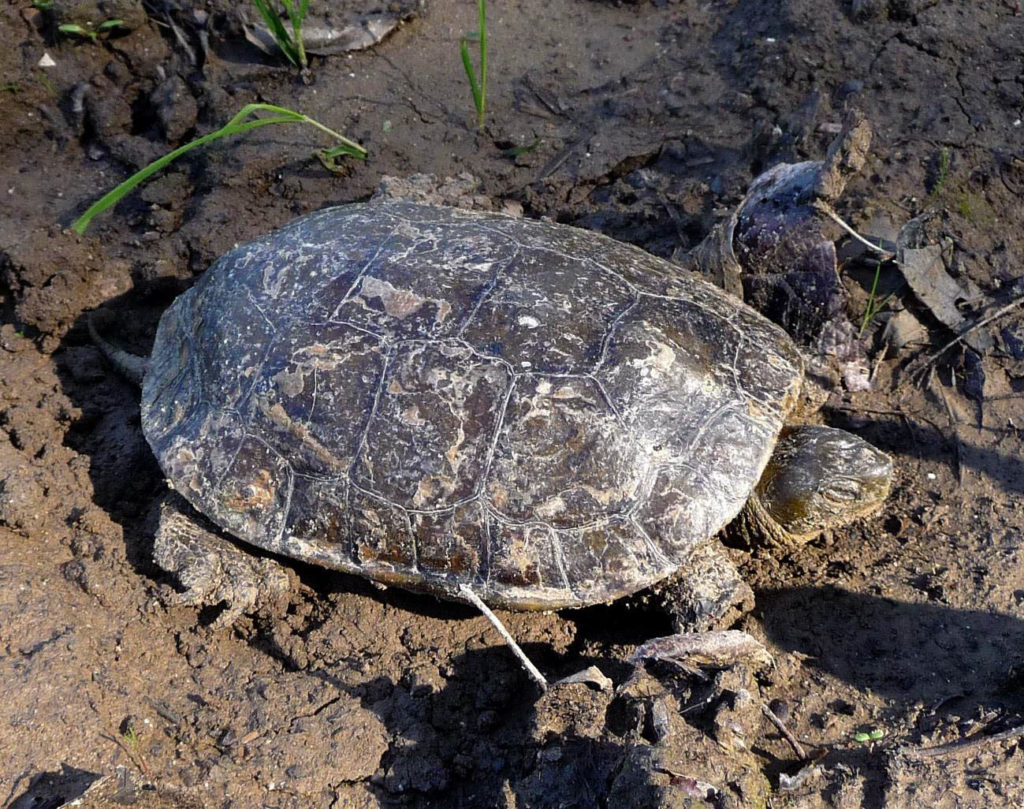The diagnostic study of three Wetlands in the Algarve, promoted by Almargem – Association for the Defense of the Cultural and Environmental Heritage of the Algarve, defends the classification of Alagoas Brancas, in Lagoa, as a Protected Area of Local Scope.
The same study, which will be presented in a public session tomorrow, June 6, at 10 am, in the Auditorium of the Algarve Regional Coordination and Development Commission (CCDR Algarve), in Faro, also proposes that a large part of this small wetland should also be classified as a Ramsar site, Important Bird Area (IBA) and Special Protection Zone (SPA), under the Birds Directive.
As for the creation of the Protected Area of Local Scope, the study advocates that the «corresponding revision of the PDM in force be made in order to ensure the natural values of the area».
For Zone A of Alagoas Brancas, the most sensitive and important area, which encompasses irrigation channels, riparian galleries, reed beds and reed beds, as well as the entire potentially floodable area, water level management measures are also proposed.

Through a «simple system in the drainage channels», it would be done «the control of the floodable area so that it is optimized for the conservation of different groups of fauna and flora, and so that Alagoas Brancas can retain fresh water during the dry season'.
In this way, the study's authors add, “several ecosystems could be created within the wetland, controlling the quota, creating deeper water areas that benefit Anatidae, herons and some waders; mud zones and shallow waters in order to benefit short tarsus waders and others such as shrimp; The maintenance of seasonal drought zones that favor the occurrence of temporary Mediterranean ponds, a priority habitat of the Natura 2000 Network, is also recommended”.
Another proposal is that access to zone A should be "conditioned" and "only allowed for water level management work".
As for Zone B, considered as a "buffer zone", management proposals involve its requalification "so that the rubble is removed and the local flora recovered". Part of this rubble was placed in 2017, to fill the area and thus prepare it for the constructions that were being allowed there.
With regard to visitation, it is proposed the «creation of one or two structures for observing birds, to be installed in strategic places» and in order to «cause the least possible disturbance to the fauna present, and the creation of a pedestrian connection between them".
The study also suggests "the design and installation of informative and interpretive contents, to support the identification and importance of the species present", "the dissemination of the natural heritage of the study area as an asset, in the sense of awareness and environmental education aimed at to local actors».
The document also proposes "fauna passages", to "facilitate access to the wetland and prevent death by being run over, particularly for small mammals, reptiles or amphibians during their 33 seasonal migrations to breeding sites, passages should be built over the N124-1 and M1272 roads».
The study, which presents the socioeconomic, geomorphological and hydrological characterization of the area, as well as the identification of existing flora communities, as well as avifauna, arthropods, reptiles and amphibians, highlighting their importance in the environmental context, also points out suggestions for proposals for management strategies for its preservation.

The study, resulting from an approved application to the Environmental Fund of the Ministry of Environment and Energy Transition, was coordinated by Associação Almargem, with the support of the scientific coordination of the Portuguese Society for the Study of Birds – SPEA.
In addition to Alagoas Brancas, in Lagoa, an exhaustive diagnosis was also made of two other wetlands in the region, namely Foz do Almargem and Trafal, in Loulé, and Lagoa dos Salgados and Foz de Alcantarilha, in Albufeira and Silves.
The Study had a technical team formed by independent experts, as well as entities such as the Center for Marine and Environmental Research of the University of Algarve, Tagis – Center for the Conservation of Butterflies in Portugal and cE3c – Center for Ecology, Evolution & Environmental Changes of the University of Lisbon.
Click here for detailed studies.
PROGRAM
CCDR ALGARVE - FARO | AUDITORIUM | 6 JUNE 2019
PRESENTATION OF THE "VALORIZATION OF THE ALGARVE WET AREAS" STUDY
10h00 - Reception of Participants
10h15 - Welcome | Francisco Serra – President of CCDR Algarve
Opening | Anabela Santos – Vice President of the Board of Almargem
10h30 - Study for the Valorization of Wetlands in the Algarve – Filipa Mendes
(Almarge)
>Foz do Almargem and Trafal
>Lagoa dos Salgados and Foz de Alcantarilha
>White Alagoas
12h00 - Round table
"Challenges in the territorial context" - Moderator Elisabete Rodrigues (Sul Informação)
Luís Graça, Deputy
Rogério Neto, Councilor of Albufeira City Council
Lagoa City Council (*)
Vitor Aleixo, Mayor of Loulé
Pedro Coelho, Head of the Urban Services and Environment Division of the Municipality of Silves
Almargem
ICNF (*)
13h00 - Closing
(*) to confirm




















Comments